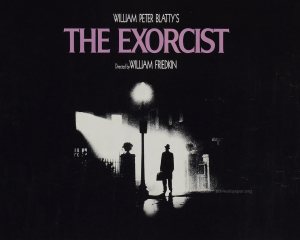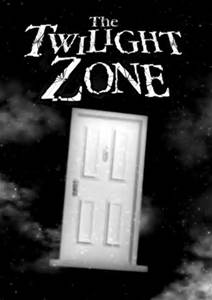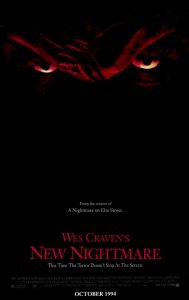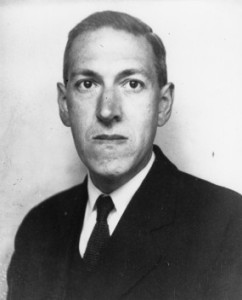Points of Light Christmas Edition: Christmas Vacation
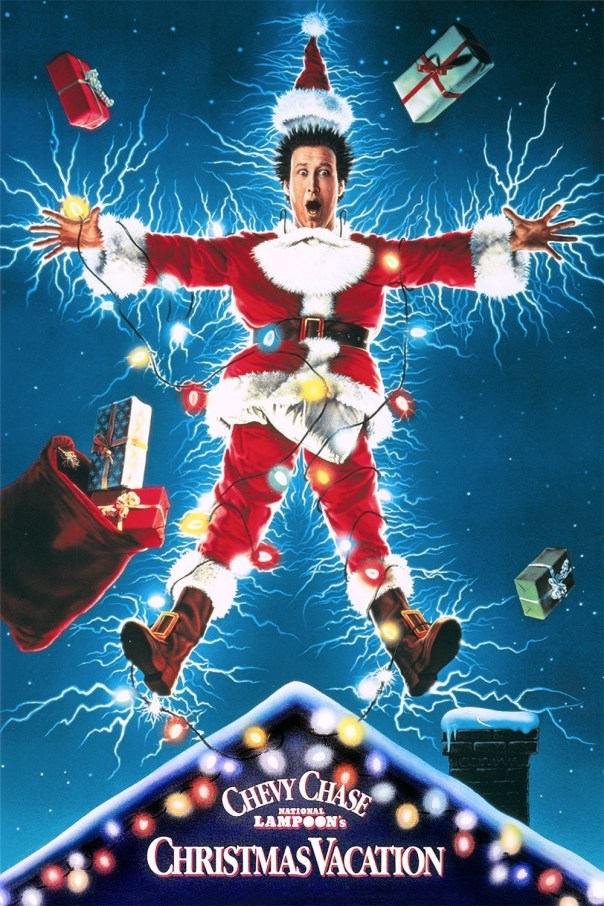
Welcome back to the last entry in our holiday retrospective. Well, the gifts are open, the turkey’s eaten, and the family’s gone home. The post holiday blues are settling in, so let’s take a minute to reflect and laugh at the insanities of the holiday season. And what better way to do that then with one of the greatest Christmas comedies ever- National Lampoon’s Christmas Vacation.
The Plot
Clark Griswold, the hero of the Vacation series, has set his sights on a perfect, ‘old-fashioned family Christmas.’ As such, he attempts to create perfect family moments like going to the woods and finding a tree (without bringing a saw), decorating his house with thousands of lights (that don’t light), and bringing his entire family to stay with them (despite the fact they all hate each other). But Clark continually puts on a cheerful face, knowing that he has a major surprise planned- a pool. However, he needs his annual bonus to cover expenses, and it still hasn’t come. Clark attempts to focus on the holiday, but the stress of constant failures, the arrival of his hated cousin Eddie, and the cancellation of his bonus, finally pushes Clark over the edge, which causes Eddie to kidnap his boss so Clark can insult him to his face, and the police to swarm Clark’s house, which still leads to a celebratory Christmas ending.
What Writers Can Learn: Parody, Conflict
Christmas Vacation is regarded as one of the best Christmas comedies, and for good reason. The events that happen in the film, while exaggerated, are still familiar to anyone that has gone through the holiday. We all want to remember Christmas as a wonderful time we spend with loving family, and that’s often how it appears through nostalgia. But in truth, Christmas is always filled with stress- the preparation, dealing with relatives that you don’t care for, and being forced to pretend to be happy. Through Clark’s actions, we are literally given a view of the ideal of Christmas verses reality. Some of us can certainly remember people that get too into the holiday, and drag others into creating something that they don’t particularly want. And all the events that Clark deals with- the tree, the lights, his family and bonus- while exaggerated, still have enough truth in them they we can relate them to our own lives.
But we also see the conflict take its toll as well. Clark represses most of his stress throughout the failures of the holiday, but he does crack under the presence of obnoxious cousin Eddie, and the cancellation of his bonus. But strangely, this manages to be work as a victory for both the ideal and realistic Christmas. Clark may hate Eddie, but he doesn’t hesitate to help out when he learns that Eddie cannot afford presents for his children. Clark’s breakdown shows him that his perfect Christmas is over, but it also prompts his father to remind him that past Christmas’s weren’t perfect either. And finally, the kidnapping of Clark’s boss also forces to realize the impact his decision has had on his employees, and in an apology, reinstates the bonuses, and allows Clark his dream of a pool. In that way, the film makes a unique resolution of its conflicts- saying that the realistic elements of Christmas are true, but that we can still come close to what we see Christmas to be through our actions.
Further Reading
The Vacation series also pokes fun at other vacation aspects, from road trips to Europe. Those looking for more Christmas style hi-jinks would do well with Home Alone, which also shows the difficulty of a family vacation at Christmas. And with that, we end this year’s holiday retrospective. Happy Holidays, and best of luck in the New Year.
Points of Light Christmas Edition: Hogfather
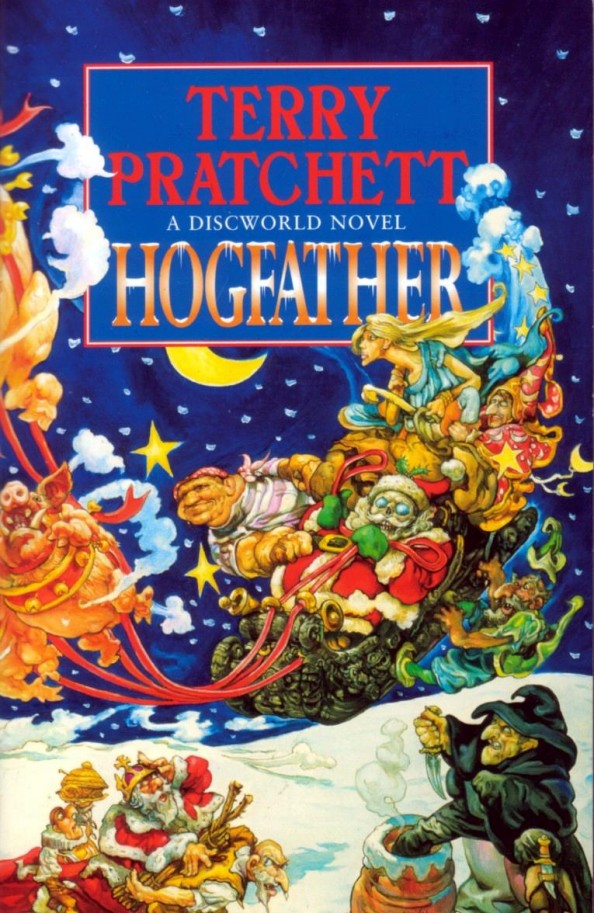
Welcome back everyone. This week, we continue our look at Christmas literature by seeing a story that goes out there. And I mean out there. Like giant space turtle out there. Today, we examine a story we’ve mentioned on this site before as one of the best Christmas stories/satires ever- Terry Pratchard’s Hogfather.
The Story
On the Discworld city of Ankh-Morpork, the people are celebrating Hogswatch, a holiday with surprising similarities to Christmas. However, their version of Santa Claus, the Hogfather, has vanished, due to the efforts of the Auditors, who dislike human imagination and belief, and the efforts of Jonathan Teatime, an assassin hired to eliminate the Hogfather. However, Death has stepped in to temporarily replace the Hogfather, performing his duties in order to keep belief going. At the same time, Death’s granddaughter, Susan Sto Helit is drawn into the mix as the lack of belief for the Hogfather has created excess belief, resulting in new beings being created simply by naming them (the God of Hangovers, The Eater of Socks, the Veruca Gnome). Susan must discover the reason behind the Hogfather’s disappearance, and then save him or the Discworld will never see another morning.
What Writers Can Learn: Satire, Nature of Belief
The Discworld novels, as mentioned before, are full of satire and pokes at the ridiculous nature of society. Hogfather is no different, as many of its pages poke fun at the traditions of Christmas. The Hogfather himself is a symbol of how Hogswatch has evoled, having begun as a pagan god of the morning and changed over time as Hogswatch itself has. Christmas has undergone the same progression from pagan ceremony to Christian holiday. The commercial aspect is mocked as well, done best when Death makes an appearance at a store.
The store’s cheerful sleigh display is destroyed for the much rougher (but more realistic) true sleigh, and as he sees the children, Death questions why the store complains when he gives the children their gifts for free (as the Hogfather is supposed to do). There is also a little girl who asks for a sword, despite her mother’s insistence she wants a doll. Christmas morals are also examined- how children are more selfish then we like to let on (though a story where a little boy wants a toystore horse, is instead giving a handmade replica and is bitterly unhappy), and the story of the Little Match Girl (who supposedly dies in the snow so that people are grateful for what they have), who is instead saved by Death, as ‘there is no greater gift then a future.’
But Hogfather is also a way to view the peculiarities of belief. As mentioned before, belief is what keeps the Hogfather active, and the lack of said belief causes other beings to pop on in his place, a comment on the human quirk of assigning unexplainable tasks to fantasy creatures (the Tooth Fairy, for example). However, the nature of the Hogfather himself shows a much greater example of the need for belief. Susan, following the adventure, questions her grandfather on what would have happened had they failed. Death explains that the Discworld would not have been lit by the sun, but by a flaming ball of gas. He further explains that humans need fantasy to be human, and beings like the Hogfather are a way to introduce ‘the little lies’ to children, so they will believe the ‘big lies’- justice and order. Susan is shocked, but Death asks her to put the universe through a sieve and try to find a single, physical grain of those qualities, and yet humans continue to act and believe that there is a cosmic order and logic to the universe.
Further Reading
The concepts of belief, and further satirical attacks on humanity are explored throughout the Discworld series, as are other stories featuring Death (recommendations include Reaper Man and Soul Music). And be sure to stop by next week for our final holiday outing.
Points of Light Christmas Edition: The Nightmare Before Christmas
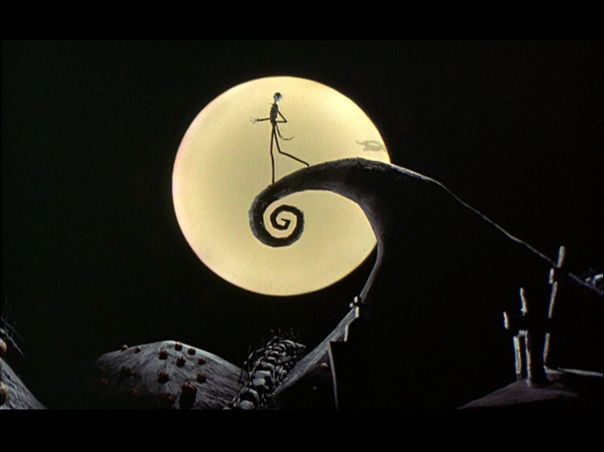
Season’s greetings once again, as we continue our look at holiday classics. Last week we explored the Christmas horror of the Krampus, and this week, we continue that theme with one of the most well known holiday mashups- Tim Burton’s The Nightmare Before Christmas.
The Plot
Jack Skellington is the Pumpkin King of Halloweentown, a land that is literally all about making Halloweeen. Jack and the other monsters work each year to create the perfect holiday, but Jack has grown bored with the same thing over and over. He stumbles across the Hinterlands, an area of the forest that borders other holiday worlds. Jack finds the doorway to Christmastown, and is enthralled by how different it is from the scares of Halloween. Jack brings some of it back home, but it unable to truly grasp the ‘science’ of the holiday. However, his enthusiasm convinces him that he can perform Christmas as well, and he gets the other denizens of Halloween to aid him. But the monsters don’t understand the idea of the holiday, and make toys and gifts designed to frighten children. Oblivious, Jack kidnaps Santa and delivers the toys, only to be shot down and lament his poor choices. However, the experience has reinvigorated Jack’s creativity and love for Halloween, so Jack returns to save Santa from the clutches of the Oogy Boogy Man.
What Writers Can Learn; Obsession, Finding Purpose
Most fans love Nightmare for its design, songs, and imagination. And with Burton’s mind, Danny Elfman’s songs, and its unlikely inspiration (Burton saw the mix of Christmas and Halloween decorations while shopping), these are all great reasons to enjoy the film. But for writers, the film is a great example of two classic themes. First, we have obsession, and a kind we can easily see around the holidays. Jack is someone that is tired of the demands of his life, and living in a world that is a reminder of everything he has grown bored with.
But suddenly, he is thrust into a world that is bright and colorful and full of joy. He not only brings this home, but tries to grasp to understand it and then make it his life. We can all relate to feeling enthralled by the Christmas season and its colorful spectacle. But anyone that has seen houses over decorated and people trying to outdo each other with gifts and parties knows that it is easy lose yourself to it as well. But Jack’s attempts go farther- he tries to make his own Christmas before he understands it. He recruits monsters, who only know scaring people, and happily accepts the frightening toys and decorations they make. Anyone could tell Jack that he’s missing the point, but he simply accepts it because they resemble the things he’s seen. Therefore, the movie stands as a metaphor for getting lost in Christmas spectacle and missing what makes it work.
But the greater purpose of the story is as a story of a mid life crisis and renewed purpose. While all the monster of Halloweentown love their work, they require Jack’s creativity to truly shine. And Jack has been doing this since Halloween began, so it is easy to imagine how draining the experience has been for him. It has made him feel bored and unsatisfied with his life, but he has no way to leave the holiday he is in charge of. Therefore, he is going through what can be called a midlife crisis- where he is wondering about the point of his life, and whether or not he can continue with it. But the discovery of Christmas gives Jack the total opposite of what he’s been doing and lets him feel that he has something new to design again- in other words, it’s his new car. But obviously, Jack’s creativity doesn’t fit the Christmas setting, and he is literally shot down in flames. But as he lies among the ruins, he realizes that despite his failure, he has performed to the best of his abilities and has enjoyed his work for the first time in years. Feeling reinvigorated, he promises new ideas for next Halloween. For writers looking to sculpt a character full of self-doubt that rediscovers purpose, this is a perfect arc.
Further Reading
For those that enjoyed the style and themes of Nightmare, Tim Burton’s Edward Scissorhands and Beetlejuice carry it on in spades, while James and the Giant Peach, a Burton production, carries on the stop-motion style and features a cameo from Jack. And for those that enjoy more weirdness in their holidays, come back next week as we hitch a ride on the Great A’Tuin and visit the great city of Ankh-Morpork.
POL Christmas Edition: The Dark Servant
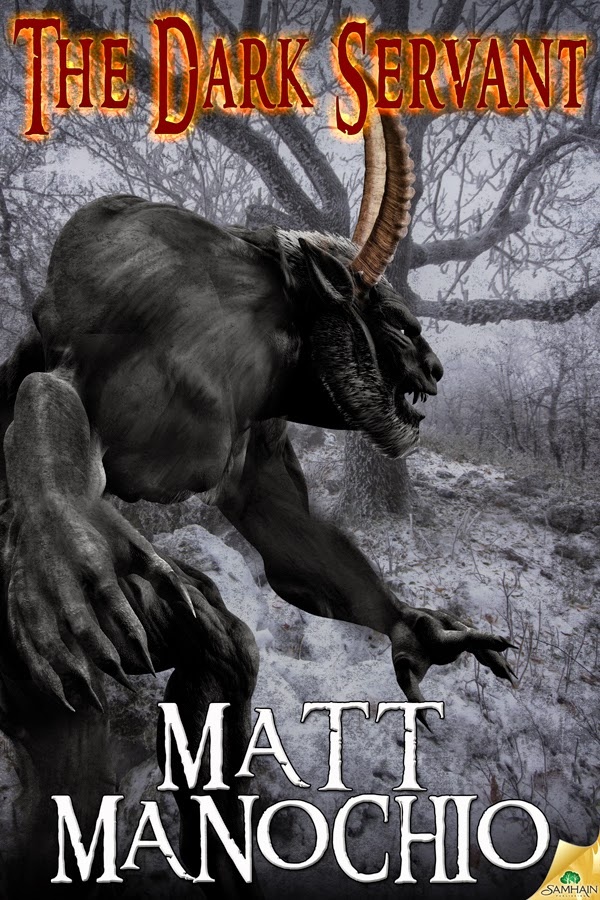
Season’s greetings from the Lightrider Journals! Today we continue our version of Christmas traditions with the annual Christmas Point of Light series, where we focus on Christmas stories that provide young writers valuable tools in their development. This year, we begin with a story that not only highlights writing, but actually one of those young, inspiring authors. In honor of the release of Krampus, the story of the Christmas devil, we straddle the line between horror and holidays, with Matt Manochio’s The Dark Servant.
The Plot
In Hancock, New Jersey, the morning of December 5th is rocked by a car accident and abduction of a high school jock. But this is only the first, as further kidnappings follow, including a high school Heather, a grade school student, and the son of the chief of police. While the police strive to find connections, all they come up with are bags of sticks left near the crime scenes, and reports of a huge, hoofed, bear like creature. The chief’s youngest son, Billy, does make a connection- the Krampus, the ancient twin of Saint Nicholas from German folklore. And indeed, he is right, as the Krampus has come to Hancock to punish the worst of its naughty children- unless they can repent. Billy and his school crush Maria, must race against time to find the Krampus before it kidnaps again. But Billy must also come to terms with just what it is that brought the Krampus to Hancock- and his part in it.
What Writers Can Learn- Dialouge, Homage, Morals
The Dark Servant works as a wonderfully twisted Christmas fable and succeeds as a fine debut in a number of ways. To begin with, Manochio avoids one of the easiest traps for a first time writer- crafting smooth, realistic dialogue. While I am certainly not claiming to be perfect, my experience with other new writers shows that dialogue can be a challenge. Often times, writers try more to sound well-written then realistic, and either explain too much or sound stiff and tin eared. While there are a few missteps, Manochio avoids this trap. He characters talk like real teenagers and adults, and while the Krampus itself can speak like Freddy Krueger, its dialogue effortlessly flies the distance between scary and funny and back.
That leads into another of the book’s strengths- the knowledge of its material. The Krampus itself plays into the mythos perfectly, and anyone that knows the creature will see its trademarks- the bad of sticks, its satanic appearance, and its desire to punish the naughty. But beyond that, the novel clearly patterns itself after a horror movie, and Manochio clearly knows the genre. The story builds in suspense, slowly bringing us out of the everyday bit by bit, as the Krampus becomes more and more visible. The elements of blood and gore are not overplayed, the characters are intelligent and fill their roles perfectly, and the Krampus itself is a perfect movie monster- sadistic and witty, but with a clear purpose and goal.
And that goal forms the core of The Dark Servant. The Krampus exists to punish naughty children, but also to make them repent. While its victims are trapped, it continually pushes and torments them to admit their sins. And these sins are not minor. The kidnapped students are there because they bullied and tormented a classmate to the point of nearly killing herself. The young boy bullied a classmate and had entertained thought of shooting him. The Krampus pushes all of them into forced confession, threatening to kill them unless they repent. But it does show restraint. It releases the children that do confess, and forces less torture onto the child, even saying there is only so much a child should have to endure. Only the Heather, who does not repent, is fully punished, and in a way the Krampus’s ‘Master’ would appreciate- throwing her down a lit chimney. Bullying and suicide are dark topics to go through, and often, they are discussed in a way that comes across as preachy. But The Dark Servant shows them in a way that is real, and with a grim message- that while the Krampus is a sadistic demon, it is our own evil that calls it- and only our own ability to face that evil that can save us. After all, Christmas is the time when we are called to be at our best- and to forgive.
Further Reading
Those interested in seeing the Krampus on screen would do well to examine the new film, or the anthology Christmas Horror Story, which also features the Krampus, in a more villainous role. And don’t forget to come back next week, boys and girls of every age, as we travel across the Hinterlands to see a town that more then a little strange.
Points of Light Halloween Edition: The Exorcist
Welcome back to the graveyard. Since this year, we end our Halloween Edition on Halloween, it’s only fitting we conclude with a horror classic in both film and literature. Grab your crucifixes, practice your crab walk, and get ready for a pea soup barrage, as we examine the basis for the most frightening film of all time- William Peter Blatty’s The Exorcist.
The Story
The elderly priest Father Merrin, a veteran of past exorcisms, uncovers evidence in Iraq that a new confrontation with evil awaits him. Simultaneously in Washington D.C., Chris McNeil is filming a movie when strange occurrences began to surround her daughter Regan. Regan’s bed literally begins to shake, odd noises are heard in the house, and Regan herself begins to change, becoming angry and withdrawn, and using previously unheard of profanity. Chris believes the changes are due to her divorce, but as Regan fails to respond to conventional medicine, and the changes start becoming horrifyingly physical, Chris believes that her daughter is possessed.
Father Karras, a priest/counselor is sought out by Chris. Karras is undergoing his own crisis of faith, and at first will only see Regan as a therapist. But his sessions also convince him of possession, and he implores the local bishop for permission to perform an exorcism. However, the bishop assigns Merrin, who is more experienced, but allows Karras to assist. They begin a lengthy and draining exorcism, which eventually kills the older Merrin. Karras then forces the demon into his own body and throws himself out the window, killing himself. His last moments are as he responds to a fellow priest giving the last rites.
What Writers Can Learn: Build Up, Use of Imagery
Widely regarded as one of the staples of horror, The Exorcist is not only powerful because of its frights, but it is also prime examples of two powerful writing tools. The first is its excellent use of build up. The possession is set up beautifully throughout the novel. Father’s Merrin’s early excursions are hinted at and we get our first sense that a greater evil is coming. But the character of Regan is where the buildup truly takes place. We are introduced to a child that is happy, loved, and by all examples, an innocent. Then the changes start. We see the innocence fade away, replaced sullenness and distance. As the possession grows, we see this happy child letting out profanities that would terrify a Navy sailor. Regan is jerked around by the horrific physical possession, from her room being tossed around, to the infamous crabwalk down the stairs. As she grows sicker, her body and face becoming twisted and horrible, we are revolted by the transformation. But no matter how much we see, how much we may think that we’ve seen the worst, there is always something around the corner to horrify us further.
That leads into our second point- the use of imagery. Obviously, the film makes tremendous use of imagery. Regan is whipped around her bed, and we see her face become yellow and scarred, her body become emaciated. We hear her voice become dark and terrifying. But while the film will also work beautifully as a visual medium, the descriptions in the book are equally terrifying.
The book describes in detail certain Satanic practices, including the vilification of holy items. These are often described as sexual in nature, and it is no wonder the book caused controversy. The idea of holy implements being misused is disturbing for anyone with religious beliefs to envision, and perhaps even to those without. But there is a particular scene in the book that is impossible to forget. While I cannot fully describe it here, it involves the possessed Regan and the use of a crucifix. The scene is horrifying on several levels. It indicates the level on control the demon has over Regan, and how much she has changed. It shows the disregard and misuse of holy artifacts, and makes us wonder just how much power that evil really has. And most of all, when we imagine a child be misused and changed to this extent, one thought that comes across our mind is ‘why.’ But here, there is no why, no answer. It is a reminder of the randomness of evil and that no one, not even the innocent, are safe from its impact. It is a scene that resonates on so many levels, and while it may be difficult to imagine, it was included in the film. Because sometimes, the images that disturb us, are the ones that affect us the most.
Further Reading
Obviously, the film version is well worth a watch, but its sequels are hit and miss. Its immediate sequel, The Heretic is considered one of the worst films ever made, but the third film, directed by author William Peter Blatty, is a much more competent supernatural crime story. There are also two prequels focusing on Father Merrin, but they are not worth examining. There is also The Omen and Rosemary’s Baby which also focus on demonic children. Blatty himself has several other novels, including Legion and Elsewhere, for more supernatural chills.
And with that, we close up the graveyard for another year. But we’ll be back again… won’t we? Happy Halloween!
Points of Light Halloween Edition: The Twilight Zone
Welcome back to the graveyard. But today, we’re venturing past the cemetery gates into someplace new. A dimension not only of sight and sound, but of a mind. A world between the pit of man’s fears and the summit of his imagination. Today, we examine the television classic that is Rod Serling’s The Twilight Zone.
The Background
Rod Serling grew up as a fan of pulp magazines. But as an adult, he was fascinated by stories about heavier topics- society, racism, government, and human nature itself. Prior to the creation of Zone, Serling was already a major television name, having written several dramas, but also criticizing the limitations TV forced upon him (such as not being to discuss current events in his political drama The Arena). Eventually, Serling was able to produce a special called The Time Element, which dealt with a man’s dreams of time travel becoming real. The special was well received, and Serling was able to work out a deal with CBS to create an anthology series. Serling himself hosted each episode, and wrote or adapted most of the stories, which in general were science fiction, but usually functioned on commentary on humanity and the issues of the day. Fueled by tales from sci-fi writers like Ray Bradbury, George Mattheson, and Charles Beaumont, the original series ran for five seasons, producing 156 episodes, two reboot series, and a film.
What Writers Can Learn- Short Story Writing, Commentary
One of the reasons Twilight Zone has lasted for so long is that it is an endless generator of stories. Being an anthology, each episode brought in new characters, new plots and new devolpments. While this obviously made the writers constantly seek out new material, it also meant they weren’t bound by any rules concerning continuity, and could do what they wanted each week. Not only did this allow for them to bring various authors to contribute, it also let them take different scenarios and topics, all while staying under the umbrella of the Zone. So for writers interested in short stories, this is of one of TV’s best examples of different stories that can function as a whole- the basis of all great short story collections.
However, the stories themselves are what gives Twilight Zone its staying power. As mentioned before, Serling had an interest in stories with consequences, and his show proved that even the best sci-fi and horror could still have a point for readers. There are countless examples of Serling’s messages, but for the sake of brevity, we will list a few classics.
- The Monsters are on Maple Street- a neighborhood block is cut off from the town, and as the power blinks on and off, neighbors accuse and turn on each other. But it is all a plot by aliens, to show how easily humans panic and how simple it will be to divide and conquer.
- It’s a Good Life- a town is terrorized by a monster- a freckle faced eight year old boy, with the power to read minds and force unspeakable horrors onto anyone he chooses.
- One For The Angels- a less then stellar salesman manages to outwit Death, but when another is chosen to take his place, he has to make the sale of a lifetime to take his spot back.
- Death’s Head Revisited- a former SS officer returns to Dachau to recall his ‘glory days.’ But he is tormented and killed by the ghosts of the inmates.
- Four O’Clock- a paranoid man claims to have built a device that will shrink the evil of the world to nothing. But at the chime of the hour, only the man vanishes.
- The Changing of the Guard- an elderly English professor is forced into retirement, and feeling his life had no meaning, decides to kill himself. But he is visited by the spirits of former students, who assure him that his lessons made them into better men.
- He’s Alive- the leader of a small neo-Nazi group is visited by a shadow that shows him how to enthrall a crowd. The leader thinks himself invincible, but he is shot by the police after committing murder- and the familiar, mustached shadow leaves to find another candidate.
Further Reading
There are several more episodes of the original Twilight Zone to look through for inspiration, running the full range of moral science fiction. Those interested in more modern tellings would do well to examine the show’s underrated 1980’s revival (though the late 2000’s revival is generally inferior for fans). Serling’s work can also be seen on the similar minded Night Gallery which focused on horror and fantasy with Serling again acting as host and script contributor. So enter into the Zone but remember the graveyard will still be here next week for one last tale.
Points of Light Halloween Edition: Wes Craven’s New Nightmare
Welcome to the graveyard once again. This year was a sad one for horror fans, as we lost one of the genre’s great creative minds- Wes Craven. While he created many diverse films like The Last House on the Left, The Serpent and the Rainbow, The People Under the Stairs, and Shocker, Craven will be remembered most for his horror satire Scream, and his crowning achievement, A Nightmare on Elm Street, the birth film of slasher icon and dream killer, Freddy Krueger. Therefore, today’s entry will pay tribute to one of Craven’s more unique films, which took some chances with his most iconic creation- Wes Craven’s New Nightmare.
The Plot
Heather Langenkamp, the actress famous as the heroine of the Elm Street series, is dealing with a stalker calling and pretending to be Freddy. But then more and more strange and terrible incidents plague the actress- her husband is killed on the set of a film revealed as a new Elm Street entry, her son begins to act strangely, and say that Freddy is coming after him in is dreams (despite never seeing the films), and earthquakes rock Los Angeles. Eventually, Heather begins to dream of a larger, more terrifying Freddy, and goes to Wes Craven himself. Craven explains that he believes Freddy is a type of demon, which can be captured by storytellers. But ‘Freddy’ has escaped, due to the story being watered down, and is coming after Heather because she portrayed the one person that could stop Freddy. Craven even reveals that his new script, drawn from his dreams, has paralleled the events of the film word for word, and that the only chance to destroy the demon, and save her son, is for Heather to resume her role and defeat ‘Freddy’ one last time.
What Writers Can Learn: Reality vs. Fantasy, ‘Meta’
New Nightmare is regarded by many as a prelude to the Scream series, as both deal with horror films ‘invading’ the real world. However, New Nightmare has many other elements that make it more revenant to fans of Freddy Kreuger. For example, the demon Freddy is supposedly released when the story of Elm St. is watered down or told too many times. Craven himself has often said he dislikes how the series turned Freddy into a more jokey killer and less of a cold blooded killer, so it is easy to view the film as Craven’s small stab at studio interference. Even Freddy’s scarier design is more in line with Craven’s original vision. But on a more serious note, Heather Langenkamp experienced a stalker in real life (ironically, from her sitcom Just the Ten of Us) and actually left the country to escape said stalker. There are also moments that combine elements of both themes- Heather on a talk show being overshadowed (and somewhat exasperated) by the appearance of the jokey Freddy. It gives the film a true ‘meta’ appeal- that it appeals to more then one level of viewer, which makes more enjoyable by those in the know.
However, another great strength of the film is its blending of reality and fantasy. While the films had previously concerned dreams overlapping reality, this one concerns film overlapping reality. As it progresses, we see more elements come into play from the films- there are ‘kills’ that ape deaths from the films, Heather’s hair develops a white streak from the fear in her dreams as her character did, and even lines from the movie begin creeping into Heather’s speech. However, the climatic moment occurs when ‘Freddy’ begins clawing his way up from under the bed. Outside, Heather is arguing over the events with John Saxon, who played her father in the films. As they argue, Heather realizes that Saxon has become his character, and that their surroundings have morphed into the film set. As Saxon quotes his lines to her, ‘Freddy’ pauses in his escape and looks on, as if he is waiting for something. Heather takes a deep breath, and says her lines from the film, which allows ‘Freddy’ to emerge. It is symbolic of both Heather accepting her role, and her gateway into the fantasy realm. It is a trick that writers interested in multiple worlds and in writing good heroes, should take note of. It not only serves to establish a hero, it also firmly establishes the different worlds and makes it clear when we have moved from one to the other. It also serves as the gateway to the final fight, where the hero, having suffered and learned along the way, is finally ready to face down her adversary.
Further Reading
The films mentioned above would serve those interested in Craven’s work, as well as the Scream series. For fans interested in Freddy, Nightmare on Elm St encompasses six films of varying quality (1 and 3 are favorites, while the others are regarded as hit and miss), and a remake which tries to expand on Freddy’s origins, but just rehashes the murder scenes again and again. But try to get some sleep before next week- we still have more graves to dig up.
Points of Light Halloween Edition: The Haunting of Hill House
Welcome back to the graveyard, as today, we continue Halloween Month by entering one of the most famous haunted houses in literature. From the mind of Shirley Jackson, come a landmark in horror literature and film- The Haunting of Hill House.
The Plot
Dr. John Montague rents out Hill House, a crumbling mansion with a dark history, in the hopes of uncovering scientific evidence of the supernatural. He brings with him three guests- Theodora, a young artist, Luke Sanderson, the heir to the mansion, and Eleanor, a recluse just emerging from years of caring for her mother. Both Theodora and Eleanor have had supernatural incidents in their past, and it is hoped their presence will spark something within the house. And indeed strange events do soon follow- noises are heard throughout the night, writing appears on the wall, and Eleanor begins to act stranger and stranger, saying she finds a kinship with the house (though it is implied she is becoming mentally unstable). After she endangers herself, Dr. Montague feels that Eleanor must leave for her own safety. While unwilling at first, Eleanor eventually starts to drive away from Hill House, but then her car slams into a tree, killing her. The reader is left to wonder if her actions were suicidal, or if Hill House truly did leave it’s dark touch upon her.
What Writers Can Learn- Perception, Subtlety,
Hill House stands as one of horror literature’s greatest works, and for good reason. In many ways, it flips the greatest rule of the writing trade- ‘show, don’t tell.’ The reader is told many things- the deaths and suicides associated with Hill House, Eleanor’s history of reclusion and paranormal experience, and even hints at lesbianism in the character of Theodora. However, what all of this means is left up to the reader, and because of that, the story can read many different ways. For example, Eleanor is clearly shown as a timid, sheltered woman, first controlled by her mother and then her sister. Coming to Hill House is her first real independent act, a fact she muses on constantly. Therefore, it is easy to see why she would form a bond with the house and its inhabitants- she sees them as signs of her own freedom. It also could explain why she is so reluctant to leave and return to her old life.
However, there is also a more unnatural possibility to Eleanor’s attitude. Dr. Montague’s profile of her states that there was an incident in her childhood where stones fell from the sky onto a disliked neighbor’s home. Readers of novels like Carrie would recognize this as a classic example of telekinetic abilities. Therefore, it is possible that Eleanor may be causing the disturbances herself, using unknown telekinetic powers. Therefore, her death is a kind of supernatural suicide. As for the incidents themselves, they themselves could be Eleanor’s attempt to prove both to herself and Dr. Montague (whom she admires), that Hill House is haunted and their adventure has not been for nothing.
But that could be a final possibility- that Hill House simply lives up to its reputation. The house has a long history of death- the founder’s wife died on the way to it, his second wife died from a fall, his daughter lived in the house until death, and the final inhabitant hung herself. This is a house with a long history of death to it’s name, and the gothic nature of the story never rules that possibility out, despite everything else that can be held accountable. Therefore, Hill House stands as a novel that is different for everyone who reads it- but chilling for everyone. For aspiring horror writers, this is the best kind of fear- one that is individual for every reader, and therefore more terrifying.
Further Reading
Hill House has been adapted for the screen in two instances, both titled The Haunting. The 1960’s version is highly recommended, but the remake adds several changes and lessens the insanity angle for CGI scares. House on Haunted Hill and Richard Matheson’s Hell House novel also explore similar ground. But no matter what house you choose to look through, the graveyard will be right outside for next week.
Points of Light Halloween Edition: H.P. Lovecraft
Happy October, loyal readers! Welcome to Lightrider’s annual Halloween Month, where we spend our time looking at the contributions of horror to the writing toolbox. And to begin this year, we’ll be looking an author whose work has already been profiled on this site, the creator of the Old Ones, H.P. Lovecraft.
The Author
Howard Phillips Lovecraft was born in Providence, Rhode Island in 1890. He was described as a child prodigy, writing poems as early as six. He also took an interest in chemistry and astronomy (though he struggled with the math needed to be an astronomer). His early life also provided much of the influence for his later work- Lovecraft suffered from night terrors and vivid nightmares, and his father reportedly went into a mental asylum when his son was three. Lovecraft also learned Gothic horror stories from his grandfather, whose death forced the family into financial difficulties (another constant theme of Lovecraft’s life).
Lovecraft largely supported himself through his work, which was generally sold to pulp magazines. While at the time given little major fanfare (much like Edgar Allan Poe), much of this pulp is regarded as classic horror, with stories like ‘The Outsider,’ ‘The Thing on the Doorstop,’ and his most famous work, ‘The Call of Cthulu,’ which began Lovecraft’s most enduring creations, the god like aliens known as the Old Ones. Still, these works gained Lovecraft little financial support, and he largely subsided on the support of his wife, Sonia Green. Unfortunately, Green also suffered financial problems, and Lovecraft was forced to reside in the Red Hook section of Brooklyn, which proved a hardship due to its immigrant population (Lovecraft held those of English descent in high regard and this sadly shows in much of his work). Eventually, Lovecraft did return to Providence, where he continued to write with increasingly small returns, until his death from cancer of the small intestine in 1937.
What Writers Can Learn: Theme, Suspense, Mystery, World-Building
There are many constants in the works of Lovecraft. He is largely considered a father of the modern horror story due to his consistent theme of man’s great insignificance in the universe. Perhaps owing to his family history and his love of astronomy, Lovecraft’s tales often involve men stumbling onto great secrets that literally drive them mad (many of his stories are recorded as the last testaments of men in the throws of madness). Tales such as ‘Arthur Jerym,’ deal with the secrets of inherited guilt, while stories like ‘Dagon’ and ‘The Colour out of Space’ show the great horrors of the universe, both from above the heavens, and the remnants left on Earth. Each of these stories show the creeping effects of madness, horrible transformations of mind and body, and that despite man’s knowledge, he is but a grain of sand in the vast and terrible beach that is the universe. For a writer looking to tell a mounting tale of suspense, or simply to keep their reader enthralled, they need look no further then Lovecraft.
And for those that look to creating worlds, Lovecraft is also a guide. His most enduring creations, The Old Ones, arguably stand as embodiments of all his themes- otherworldly beings that dwarf man, cause fear that creates madness, and will one day return and undo all of humanity’s work. But they are also an influential mythology onto themselves. ‘The Call of Cthulu’ describes an archeological expedition that uncovers the writings and remnants of Cthulu, including the cult that still worships him, the location his ancient, underwater city, and sets the basis for the creation of the other Old Ones. With this, and other Old Ones tales, like ‘Dagon’ and ‘The Case of Charles Dexter Ward,’ Lovecraft created not only a pantheon, but a sense of an ancient world and it’s people, and a horror that will continue to dog man forever. He creates a past and present, and then links the two together forever, some of the finest world building and one authors should strive to look to.
Further Reading
The list of Lovecraft’s stories and the works inspired by them is numerous. However, those looking for the complete history should purchase The Necronomicon, a thorough collection of all Lovecraft’s works (smaller collections are also available). From those stories, ‘Herbert West; Reanimator,’ ‘At the Mountains of Madness,’ ‘The Shadow Over Innsmouth,’ ‘Cthulu,’ and ‘The Colour Out of Space,’ are all recommended. Many film adaptations also exist, such as Reanimator, From Beyond, The Haunted Palace (though this is mistakenly thought to be based on Edgar Allan Poe’s poem) and the anthology Necronomicon. Many films have also been inspired by Lovecraft- the Evil Dead series contains its own Necronomicon, and John Carpenter’s In the Mouth of Madness is heavily inspired by Lovecraft’s work. So go find your own way in, but don’t stay too long. We have more to dig up next week.
Being a Working Writer
Greetings one and all. I have to apologize for taking so much time between posts, but I have a good reason. I started a new job and have spent my learning new things and adjusting to a new schedule. But writing is still my main passions, which led to me to consider the dilemma that many writers and creative people face- how to be financially successful while also feeding our creative impulses.
First and foremost, I want to make it clear that writers and artists should not abandon their impulses strictly for money. But following those impulses means a difficult path. Finding a writing job alone is hard, as there is not the kind of demand that jobs in other fields have. You are not going to go into a job fair and find hundreds of newspapers or writing forums begging to hire you. You have to find those jobs yourself. And even then, many of them are selective and will require you to prove yourself. That is a process that takes time, and will not necessarily feed or clothe you as you do it.
With such odds, it’s not surprising that many creative people have other jobs. There’s no shame in this, and it does have benefits. Obviously, pay and insurance come into play at a job, and with those factors in play, creative people have less to worry about and can focus on their craft. But even that is not a perfect set up, since a job will demand one thing above all else- your time. While you may be able to provide for yourself and spend time writing or sculpting or whatever all day, you may feel that you now don’t have enough time to do these things, or are exhausted by the job.
These are factors that I can sympathize with, but there is a simple truth- that is the price you have to pay. Living off creativity is hard and there is no guarantee it will happen. It doesn’t mean it’s impossible, but it does mean rolling up our sleeves and slogging in the real world until we can make our dreams real. So for those of us that need to do both, I say this- plan. Plan your time so you can do what you love. Plan your paycheck so you support yourself and feed your passion. As hard as it might be, that is the only way to one day be able to live off what you put down on the page.
And as proof things can pay off, I was recently selected as the Indie Author of the Month by bookishjessp’s blog. Check it out here and keep working on your job and your dream.
http://bookishjessp.com/2015/08/07/indie-author-of-the-month-eric-nierstedt/
